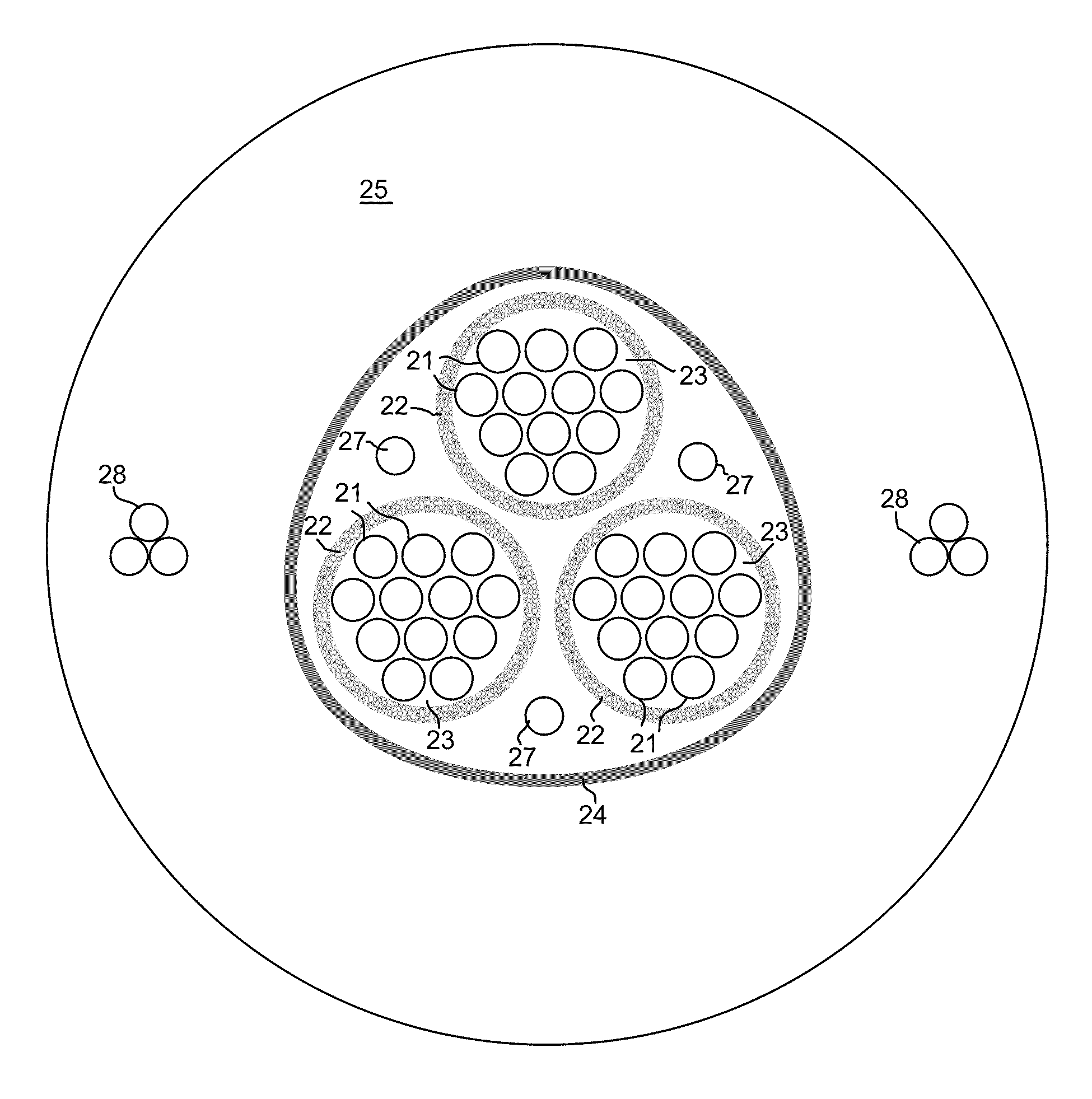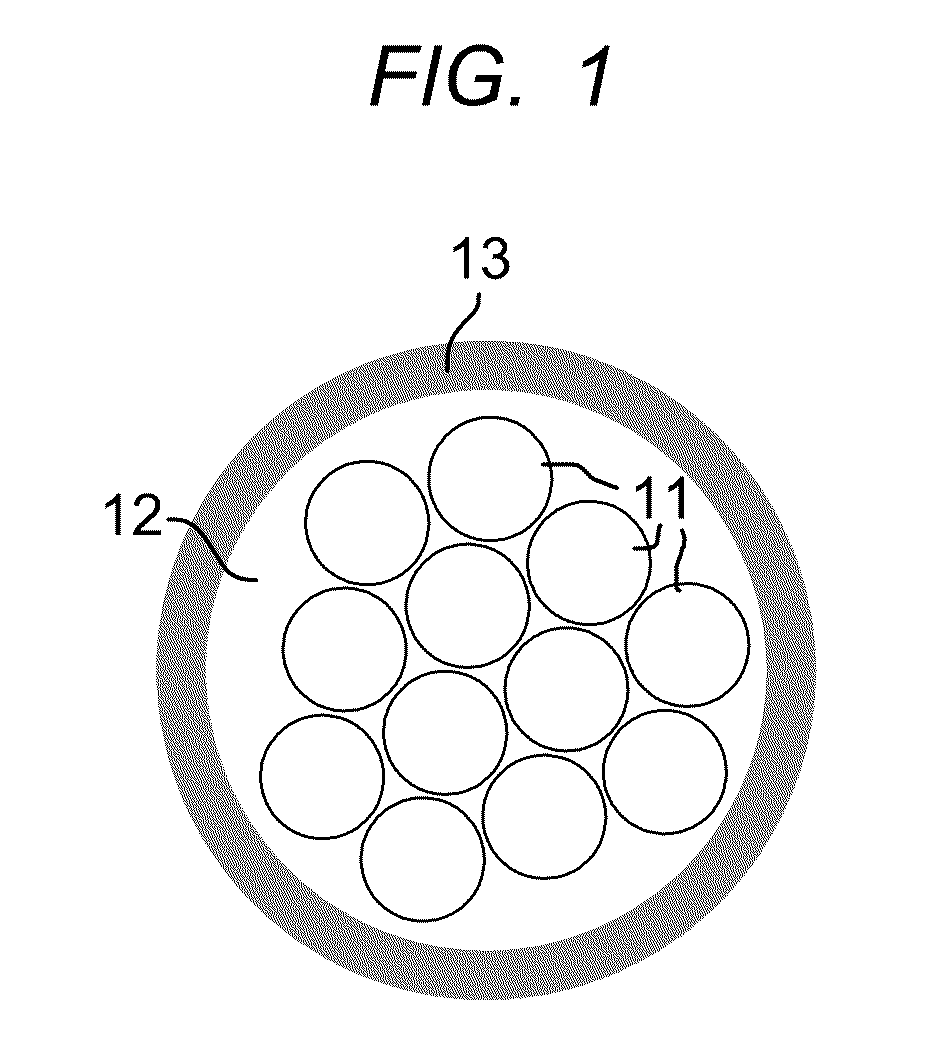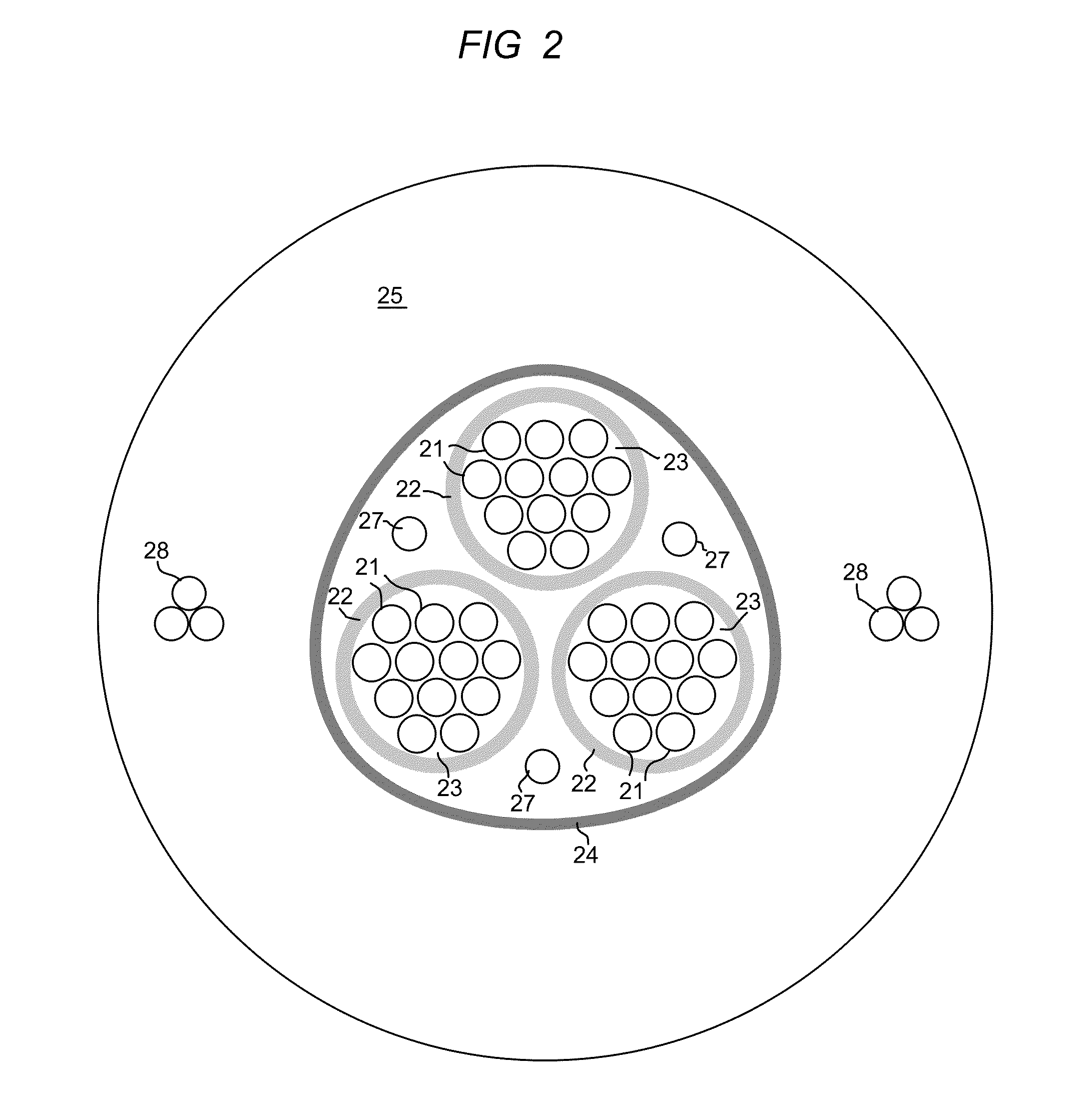Aerial optical fiber cables
a technology of optical fiber cables and ribbons, applied in the field of optical fiber cables, can solve the problems of difficult installation and handling, loose tubes or ribbons in the central core ribbon cables, and the bulky and heavy nature of traditional loose tube or central core optical cables, and achieve the effect of easy installation and handling in one operation, and high fiber counts
- Summary
- Abstract
- Description
- Claims
- Application Information
AI Technical Summary
Benefits of technology
Problems solved by technology
Method used
Image
Examples
Embodiment Construction
[0014]A typical multifiber tight buffer encasement unit of the invention is shown in FIG. 1. In FIG. 1, a twelve fiber embodiment is shown with the twelve optical fibers 11, encased and embedded in a soft acrylate matrix 12. As is well known, reference to an optical fiber means a glass fiber coated with a polymer protective coating. The elements in the figures are not drawn to scale. Surrounding and encasing the soft acrylate matrix is a relatively hard acrylate encasement layer 13. Together, the optical fibers, the acrylate matrix, and the acrylate encasement layer, comprise a round dual layer optical fiber tight buffer encasement. In this embodiment the multifiber tight buffer encasement contains 12 optical fibers, but may contain from 2-24 optical fibers. Multifiber tight buffer encasements with 4 to 12 optical fibers may be expected to be most common in commercial practice. The multifiber tight buffer encasement unit shown in FIG. 1 is described in greater detail in U.S. Pat. No...
PUM
 Login to View More
Login to View More Abstract
Description
Claims
Application Information
 Login to View More
Login to View More - R&D
- Intellectual Property
- Life Sciences
- Materials
- Tech Scout
- Unparalleled Data Quality
- Higher Quality Content
- 60% Fewer Hallucinations
Browse by: Latest US Patents, China's latest patents, Technical Efficacy Thesaurus, Application Domain, Technology Topic, Popular Technical Reports.
© 2025 PatSnap. All rights reserved.Legal|Privacy policy|Modern Slavery Act Transparency Statement|Sitemap|About US| Contact US: help@patsnap.com



